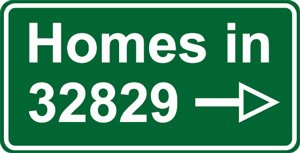TAX TIME! QUALIFIED BUSINESS INCOME DEDUCTION EXAMPLES
Confused about how real estate professionals are impacted by the Qualified Business Income Deduction of Section 199A? Here’s a few examples.
Example 1: Amy Agent is a single Realtor® who operates as a sole proprietor and independent contractor. She received $100,000 in net commission income in 2018. She has no capital gains or losses. After claiming deductions not related to her business, including the standard deduction, Amy’s total taxable income for 2018 is $81,000. Her qualified business income (QBI) is $100,000, which is her gross commissions less her business deductions. Amy’s section 199A deduction for 2018 is equal to $16,200, which is the lesser of 20% of her QBI from her business as a real estate agent ($100,000 x 20% = $20,000) and 20% of Amy’s total taxable income for the year ($81,000 x 20% = $16,200).
Example 2. Assume the same facts as in Example 1 except Amy Agent also had taxable pension income of $20,000, making her taxable income for the year $101,000. Her QBI is still $100,000. Amy’s section 199A deduction for 2018 is now equal to $20,000, which is the lesser of 20% of her QBI from her business as a real estate agent ($100,000 x 20% = $20,000) and 20% of Amy’s total taxable income for the year ($101,000 x 20% = $20,200).
Example 3. Carla and Bob Broker are married and file a joint tax return. Carla earns $50,000 in salary as an employee of Acme Corporation in 2018. Bob owns 100% of the shares of Bob’s Brokerage, which is an S corporation that provides real estate services and contracts with several agents. Bob’s Brokerage generates $100,000 in net income in 2018 after deducting Bob’s salary of $150,000. Carla and Bob have no capital gains or losses. After allowable deductions not related to the brokerage, Carla and Bob’s total taxable income is $270,000 ($50,000 salary for Carla + $100,000 net income from Bob’s Brokerage + $150,000 for Bob’s salary less $30,000 in deductions). Carla’s and Bob’s salaries are not considered Qualified Business Income (QBI). However, the net income from the S corporation is QBI. Carla and Bob’s section 199A deduction is equal to $20,000, the lesser of 20% of Bob’s QBI from the business ($100,000 x 20% = $20,000) and 20% of Carla and Bob’s total taxable income for the year ($270,000 x 20% = $54,000).
When Congress was debating the Tax Cuts and Jobs Act of 2017, it was not clear that personal services professionals like Amy and Bob would get much, if any, deduction for their business income. NAR, along with other organizations who represent small businesses, encouraged Congress to make the deduction available to as many small businesses and proprietors as possible. The result was that all sole proprietors and pass-through business owners below the taxable income thresholds of $157,500 for single filers and $315,000 for joint returns were made eligible for the deduction.
Example 4. Deborah is single and a high-producing Realtor® in an active market. She is an independent contractor and sole proprietor of her business. She received net commission income of $400,000 in 2018. She has no employees, but owns business property consisting of her car and office equipment that originally cost $70,000. After allowable deductions unrelated to her business, Deborah’s total taxable income for 2018 is $370,000. Because her income exceeds the applicable threshold amount, Deborah’s section 199A deduction is subject to the W-2 wage and qualified property limitations. Her business has no W-2 wages, so the QBI component of Deborah’s section 199A deduction is limited to the lesser of 20% of the business’s QBI or 2.5% of its original cost of qualified property. 20% of her $400,000 of QBI is $80,000, and 2.5% of her original cost of her qualified business property is $1,750 ($70,000 x 2.5%). Therefore, her section 199A deduction for 2018 is $1,750.
Example 5. Assume the same facts as in Example 4 above, except that Deborah has an employee whom she pays wages of $50,000 in 2018. Because her taxable income is above the threshold amount, Deborah’s section 199A deduction is subject to the W-2 wage and qualified property limitations. 20% of her QBI of $400,000 is $80,000. The W-2 wage limitation equals 50% of Deborah’s employee’s wages of $50,000 or $25,000. The original cost of qualified property limitation equals $14,250, the sum of 25% of the employee’s wages ($50,000) or $12,500 plus 2.5% of the original cost of qualified property ($1,750, as above) is $14,250. The greater of the limitation amounts ($25,000 and $14,250) is $25,000. Deborah’s 199A deduction is limited to the lesser of 20% of the QBI ($80,000) or the greater of the limitations ($25,000). Thus, her deduction for 2018 is $25,000.
Note: Had Deborah paid more wages or had a larger investment in business property (owning the business’s office building, for example), the section 199A deduction could be much larger.
As enacted, the section 199A deduction provided that owners of certain businesses that provided personal services would be prohibited from claiming the deduction if their taxable income were over certain thresholds ($157,500 for single filers and $315,000 for joint returns). One of the prohibited types of business was “brokerage service.” Thus, it appeared that real estate agents and brokers would not be allowed to claim any section 199A deduction if their taxable income happened to exceed the threshold amounts. However, NAR advocated with the U.S. Treasury Department and the Internal Revenue Service, urging them to not include real estate professionals in the “brokerage services” category. The regulations, issued in January 2019, held that real estate brokers and agents would not be included in the prohibited category and thus would be eligible to claim the deduction no matter how high their incomes.
Disclaimer: These examples are for general information and education purposes only. They are not offered as legal advice, legal opinion, or tax advice. The U.S. Treasury Department requires us to inform you that these examples are not intended by NAR to be used, and cannot be used by any taxpayer, for the purpose of avoiding any penalties that may be imposed under the Internal Revenue Code. Discussion in these examples relating to federal tax matters may not be used in promoting, marketing, or recommending any entity, investment plan, or arrangement to any taxpayer. Readers of these examples are advised to seek advice from a competent tax professional.




